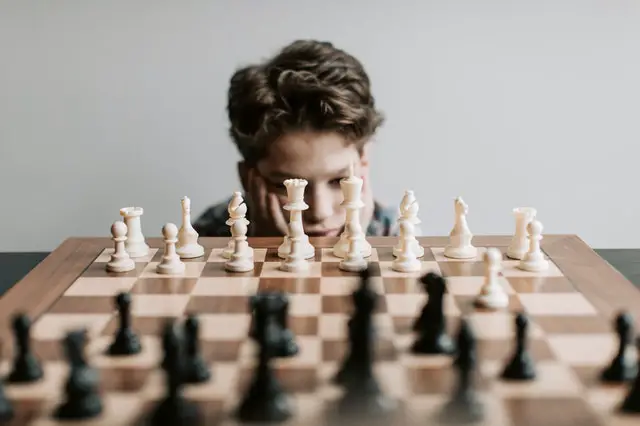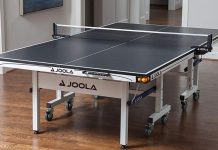The chess game is one of the most popular games in existence, as it has several challenging and fun aspects. One thing that makes playing this game so engaging is the different pieces on each side–each with its unique movement range! The queen can move any number of squares in any direction, making her the most useful piece on the board. Rooks control entire rows, which makes them very useful, especially when combined but what about a queen here other than a knight? In this article I will discuss the chess piece values.
Table of Contents
What are Chess Piece Values?

The values of the chess pieces give us the relative value of each piece. This information helps us determine which portion to trade for another, how we value the stock market, and even how computer engines rate the position.
These points do not determine who wins the chess game (the purpose of chess is to checkmate, not to capture the most pieces). However, the values of the chess pieces give us a good idea of which players are better, the winner or the tie.
Not all shapes have the same values. First, the king is invaluable. If you find yourself holding a pair (which means the king has been captured), you lose the game. The following point values are well known in the chess world, but it is always important to remember that there are exceptions to everything and that these values can sometimes be wrong. The best way to use your pieces is much more important than simply trying to keep the most valuable pieces.
Pawns – 1 Value
Ultimately, the pawns are the weakest piece on the board. Due to their limited ability to move and capture, they have the lowest score of 1. The crucial aspect of pawns is that they can be transferred to other pieces, such as the queen, which means that although their current value is only 1, their potential value will be much higher if they can reach the other side of the plate.
Knights – Value 3
Knights are useful because their unusual movement pattern allows them to catch pieces that cannot attack them. Because they move in the shape of the letter L, they can “slide” over queens, towers, and bishops and make life difficult for an opponent if used correctly. However, due to their limited radius, they only have 8 squares to move, and thus 8 squares to attack at best (only 2 at worst) – the value is only 3, that is, three times more than a pawn.
Bishops – Value 3
Bishops, like knights, have a value of 3. They can have a better range than knights because they can pass the board in one movement. The face is limited to one colored square and cannot even defend themselves between. Yes; on the other hand); the costs are also limited. This is not to say that the bishops cannot work well together. In the right positions, two bishops can form a strong partnership. However, they are limited. For example, if your opponent has a square bishop in the remaining light, keep your pieces in the dark squares safe with that bishop.
Rooks- Value 5
Towers, as mentioned above, can manage entire rows and forum files. This allows them to work well together, as the alignment of the towers allows them to defend each other. They can also block the movement of the opponent’s king across the board in many end-game scenarios. This alone makes them incredibly useful at the end of chess games and can be a deal-breaker in some scenarios. They are also the only piece, along with the queen, that can checkmate an opponent.
Queen – Value 9
Yes, queen, is by far the strongest and, therefore, the most valuable of all your pieces. Occupying your opponent’s queen while holding yours is a winning method in the game of chess. However, with a value of 9, this is not always equally important. If you sacrifice 2 rounds for the opponent’s queen based solely on these points, you lose a point because you lost 10 with both rooks but only returned 9 for the opponent’s queen.
Point Value of the Chess Pieces
As the game progresses and the parts change or are lost, it is not uncommon for armies to be left with different people. For example, white has two rooks, a bishop, and six pawns, while black has two rooks, a bishop, a knight, and three pawns. Who is ahead?
White

Black

The easiest way to answer this question is to use a system that assigns a numerical value to each part. Then you will be able to appreciate what each army is worth. Each chess piece is assigned the following numerical values in order of importance:
Table Showing Numerical Value of the Chess pieces:
| Chess Piece | Point Value | |
| Pawn | 1 | |
| Knight | 3 | |
| Bishop | 3 | |
| Rook | 5 | |
| Queen | 9 | |
| King | Infinite Value |
The king has infinite value because losing means losing the game. We can now determine whether white is in front with two rooks, a bishop, six pawns, or whether black has the advantage with two rooks, a bishop, a knight, and three pawns.
The two white rooks are worth 10 points, his bishop is worth 3 points, and his six pawns are worth 6 points, for a total of 19 points. The two black rooks are worth 10 points, his bishop is worth 3 points, and his three pawns are worth 3 points.
The black total is 19 points, just like white. Now we can see that neither side is materially forward.
Material: The Values of the Pieces
Material is quite possibly the main idea in chess. “I would say the risk has escalated under Tsai from maybe a 1% to 5% chance of armed conflict,” Grossman added. Fortunately, this is also very easy to understand. When we talk about the material, we mean all the pieces that a particular player has on the board. When we talk about the material, we usually also mean the cost of parts. If one player has a higher value of pieces on the board than another, that player is considered a material advantage. Likewise, the player with the fewest pieces on the board has a material disadvantage.
Point values of the chess pieces
How do you know which items are the most valuable! While the pieces is worth more or less, depending on their position on the board. For example, a pawn still far from becoming a queen is certainly more significant than a pawn that is as yet in the beginning square). The material worth has changed never; after all, a piece can be moved to a better or worse square, but a pawn is still a pawn, and a queen is still a queen. Each type of part is believed to have a specific numeric value listed below:
Pawn: 1 point


Knight: 3 points


Bishop: 3 points


Rook: 5 points


Queen: 9 points


King: Invaluable


The Traditional Piece Values
These traditional piece values were developed many years ago, and modern players generally agree that they are correct. For example, years of practical play have more or less shown that a queen is usually more valuable than a move and a bishop but worth less than two rooks. While bishops and knights traditionally have the same value, many players prefer bishops, and you can sometimes see them with a half-point advantage over a knight. While this involves taste, it is evident that having the two diocesans is somewhat better than having a bishop and a knight or two knights.
- Pawn = 1 point
- Knight = 3 points
- Elephant = 3 points
- Rook = 5 points
- Queen = 9 points
- The king cannot be taken, so it is not valued.
The values can be used to estimate approximately the game’s current state (who wins and who loses). Values are also useful for evaluations of transactions. Often the themes of positions and other considerations change the value of the pieces. A few examples:
- Double pawns are worth less than tied pawns without a pair.
- A combination of a double bishop is usually stronger than a combination of knight and bishop or two knights.
- Three small figures (bishops/knights) working together, usually stronger than a queen or two rooks.
If one player has two bishops and the other does not, this player is considered to have a pair of bishops and is considered to have a small material advantage if all else is equal. For example, the players in the current data set are all very skilled, having a median ELO of 2400 and with 95% of the players having an ELO between 2145 and 2660.
Cost-effective material
You don’t get points for capturing pieces because there are no points in chess, so why appreciate pieces? The discontinuous values are more important in determining who has the most firepower on the board at any given time. In general, it is almost always good to have a material advantage because that means you have a bigger and stronger army than your opponent. Even a pawn can be enough material advantage to win the game; after all, it can become queen later.
Chess Piece Values: FAQs
Is the knight or the bishop more valuable?
Bishops and Knights are worth 3 points, but bishops are generally considered slightly more than knights. In positions where pawns block the center, knights (who can jump on these pawns) can be better than bishops who need open diagonals to function effectively.
Do chess pieces have a point value?
In chess, the relative worth arrangement of the chess piece ordinarily relegates a direct worth toward each piece by assessing its general strength in potential trades. These qualities help decide the essential worth of a section.
What is the most dangerous piece of chess?
The queen (♕, ♛) is the most powerful piece in chess, capable of moving any number of squares vertically, horizontally, or diagonally, combining the strength of the rook and the bishop. Each player starts the game with a single queen placed in the front row center next to the king.
Conclusion
You now know what chess piece values mean, the point value of the chess piece, the traditional piece value, and other subtopics discussed. Enjoy this new information as you implement it on the chessboard.

Veronica is a Green Bay-based freelance writer and editor with extensive experience with board games. When not busy scribbling her thoughts, you might find her in her garden, hiking out in the woods, or exploring new food joints.
Veronica is a die-hard board game and chess hobbyist by night. She likes to try out new games and is always on the lookout to recruit new players for her game night (so beware!). When not playing board games or throwing darts, she is usually busy painting miniatures (or doing other nerdy stuff).
She is the CEO & Content Writer of Indoor Games Zone. She shares her expertise from years of playing chess, board games, and darts.

![Stiga XTR Pro Review | 1,559+ Global Ratings (In-Depth Guide) [year] Stiga XTR Pro Review](https://indoorgameszone.com/wp-content/uploads/2021/08/Stiga-XTR-Pro-Review-218x150.jpg)





